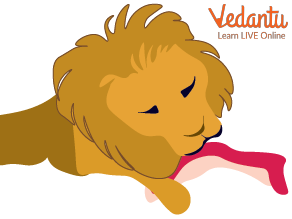




Why Is Habitat Important for Lions' Survival?
Hey kids I am sure you might have seen a lion in a zoo or on television as well. But, do you know what they eat? where they live, etc? So, let's learn everything about lions here. The lion is a very much ripped largest cat with a long body, huge head, and short legs. Size and appearance change significantly between the genders.
The male's remarkable trademark is his mane, which fluctuates between various people and populaces. It could be completely inadequate with regards to; it might periphery the face; or it could be full and shaggy, covering the rear of the head, neck, and shoulders and going on onto the throat and chest to join a periphery along the midsection.
Lions are normally known as the 'King of the jungle. Individuals all over the planet think about the image of lions as an indication of solidarity and power. They are the world's second biggest and largest cat after the tigers. They are the social felines and live respectively in bunches called pride.

Lion
Appearance of Lion
Lions are warm-blooded mammals. They develop around 5 to 6 feet in length from their head to the back and can weigh as much as 130 kg (400 pounds). They have four legs with extremely strong paws. They have an awesome visual perception, feeling of smell, and feeling of hearing, which make them fantastic trackers. The male lions have a pleasant mane (hairs around the neck), though female lions don't have the mane.
Diet of Lions (Lions Feeding Habits)
Lions are carnivores (meat eaters). They generally eat bison, zebras, and wildebeest. They are awesome trackers and frequently chase in gatherings. The prey is generally pursued by female lions. Lions along with their gathering can chase down elephants and giraffes. They spend around 20 hours resting and dozing and chasing during sunset and first light periods.

Lion
Habitat
What is a Lion's Habitat?
Most of the lions are tracked down in India and Africa. They for the most part live respectively in bunches called pride. Each pride contains around 3 to 30 lions. Pride is the combination of the guys, females, and fledglings (child lions). The fledglings of the lions live with their family until they become 2.5 to 3 years of age, then, at that point, they are driven out of the pride.
Conservation Status
Lion Facts for Kids
Lions species are proclaimed as powerless. African lions are red-recorded by IUCN and have been close to eradication. The quantity of lions has diminished because of the annihilation of their living spaces and woodlands. Numerous human trackers see themselves as bold men because of hunting a lion.
The quantity of lions in India has reached 500. There are various contending developmental clarifications for why lions structure gatherings. Huge body size and the high thickness of their principal prey likely make bunch life more effective for females regarding energy use.
Gatherings of females, for instance, chase all the more actually and are better ready to protect whelps against infanticidal guys and their hunting an area against different females. The overall significance of these elements is discussed, and it isn't clear which was answerable for the foundation of gathering life and which are optional advantages.
Summary
The lion has a huge head, a lengthy torso, short legs, and keen claws. Including the tail, adult males measure roughly 9 to 10 feet (2.7 to 3 metres) long. They can weigh between 370 and 500 pounds and stand around 3 feet (1 metres) tall at the shoulders (170 to 230 kilograms). Females are more slim and shorter.
Lions are exceptional among felines in that they live in a gathering or pride. A pride comprises a few ages of lionesses, some of which are connected, fewer rearing kids, and their fledglings.
FAQs on Lions Habitat: Where and How Lions Live in the Wild
1. How much food does a lion consume at one sitting?
Average daily food consumption for male and female lions is 7 kg and 4.5 kg, respectively. Both have the capacity to consume up to 15% of their body weight in a single meal. That is equivalent to 70 cans of cat food for a man. Lions are notoriously avaricious and will chase prey even if they are not hungry.
2. How far away can one hear a lion's roar?
Being one of the most gregarious big carnivores, lions in the wild live in prides. Intruders are frightened away and the pride is alerted of impending danger by male lions using their roar. Additionally, it's a display of dominance among men. Lion roars can easily be heard from up to 5 miles away.
3. Why do males lions observed to have manes?
The mane has frequently been thought of as a shield that guards a male's neck during fights with other males, however lions typically engage in back and hip attacks. As with the showiness of the peacock's tail, the size and colour of the mane instead inform other lions about the male's fitness. The Serengeti lion project found through studies with life-size "dummy" lions that females favour males with darker manes. Only the "fittest" males are able to develop the most alluring manes since darker manes also take a physical toll by boosting body temperatures. Other males can learn about a lion's fighting prowess by the length and blackness of its mane.









